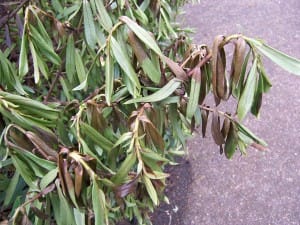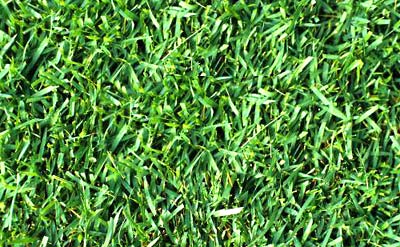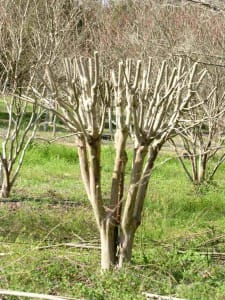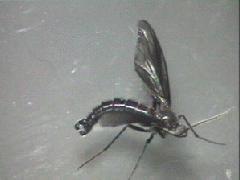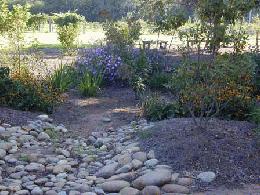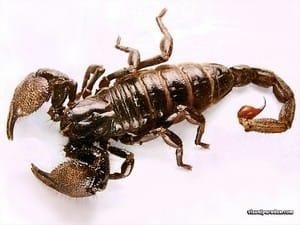Source(s): Paul E. Sumner, Extension Engineer
Whether you are a homeowner, farmer, grower, rancher or commercial applicator, proper transportation and storage are important aspects of safe pesticide use.
Transportation
Pesticides should never be transported inside the passenger compartment of an automobile or truck cab; put them in the trunk or in the back of the truck. Never transport them where they, could come in contact with groceries, livestock feed or other products which might become contaminated.
When transporting pesticides in a truck, see that they are secured to prevent spillage or loss due to sudden starts, stops, turns, etc. Should there be an accident or spill, immediately inform the local police and fire officials of the quantity and name of the pesticide involved. Large spills, particularly of ” Restricted Use Pesticides,” should be reported to the Georgia Department of Agriculture (404-655-4958), CHEMTREC (1-800-424-9300) and/or the manufacturer.
Applicators of pesticides, particularly in heavily populated areas, must take special precautions to secure products, transported to the application site. Allowing containers of pesticides to remain unattended on the back of an open truck is inviting an accident — and a costly lawsuit.
Commercial transporters of pesticides must meet special requirements: vehicles must carry placards, bills of lading, labels of the product, etc. Consult the Georgia Department of Transportation regarding these requirements.
Storage
Nearly three-fourths of all pesticide accidents occur to non-users of the materials. Many of these involve children. In addition, each year there are several cases of livestock and pet poisonings from contacts with improperly stored pesticides. These accidents not only cause human suffering and economic losses, but improper storage is contrary to federal regulations. READ THE LABEL: IT IS THE LAW.
Whether you are a homeowner, producer or applicator of pesticide, there are basic safe storage rules to follow:
- Keep pesticides, other poisons, and related materials locked in a cabinet, room or separate building designated solely for the storage of these materials. Metal storage cabinets, such as discarded school lockers, provide excellent storage for homeowners or other users of small amounts of pesticides.
- Post the facilities with a sign: “PESTICIDES – POISONS, KEEP OUT”, or similar signs.
- Control access to this facility to only one, two, or three highly trusted, responsible and informed individuals.
- Never store pesticides where food, feed, seed, fertilizers or other products can become contaminated.
- Store pesticides in their original containers. It is the law.
- The facility should be reasonably fireproof and well-ventilated. Temperatures should be kept between freezing and 100 degrees F.
- Sealed concrete floors, concrete block walls and metal shelves are recommended over wooden structures.
- With shelf storage, store dry pesticides on the top shelves, liquids on the lower shelves.
- Electrical fixtures should be of the dust-and explosion-proof type.
- Provide adequate space for the secure storage of empty pesticide containers until proper disposal of them is possible.
Those businesses with large quantities of pesticides to store should have a separate building for this purpose. In addition to the above features, this building should also include the following characteristics.
- When feasible, the building should be downwind and downhill from sensitive areas, such as homes, play areas, feedlots, animal shelters, gardens and ground water sources.
- The building should be located in an area not subject to flooding.
- A drainage system should be built to collect any tank rinsing water or spoils. This material should be treated as surplus pesticide and must be disposed of properly, according to label instructions.
- A water supply should be furnished, not only for mixing, loading, tank rinsing and cleanup, but for showers and cleanup for the persons who mix, load and apply the pesticides.
- Fire detectors and fire fighting equipment should be available.
- A telephone should be convenient, with all emergency numbers posted.
- A current inventory of all materials in storage, along with a label of all materials, should be maintained in a secure area away from the storage area. The local fire department should be provided with an updated copy of this inventory.
- Equip the storage area with all personal protective equipment and materials to prevent accidents and to handle accidents and spills. Activated charcoal, absorptive clay, vermiculite, clay-granule type cat litter or sawdust are good materials to absorb liquid spills.
- Date and identify all pesticides when they are placed into storage, and store no more than will be needed for one season. Establish a policy of first-in, first-used, so that pesticides do not become outdated.
- Have your fire insurance carrier inspect your pesticide storage facility periodically — it is intelligent management and may reduce your insurance premium.
Many pesticide storage facilities are inadequate, dangerous and lack security. Plans are available for constructing a safe pesticide storage building. If drains are installed in the building or in the mixing/loading platform out-of-doors this drain water must be captured and not allowed to enter ground or surface water. Copies of this plan are available from the Cooperative Extension Service.
Mixing and Loading
Mixing and loading of pesticides are among the most dangerous tasks involving work with these products, because it is at these times that people are working with open containers of concentrated pesticides.
For this reason, individuals employed to perform these activities should be well-informed of the dangers involved and work under the supervision of a properly certified, licensed applicator whenever handling “Restricted-Use Pesticides.”
Mixing and loading should never be done without a full understanding of the pesticide label or without the use of all recommended personal protective equipment. The label will identify the dangers involved and the precautions to follow. It will also indicate the signs and symptoms of poisoning and recommend first aid practices, should a person be exposed to the product.
Before you begin to mix, load and apply pesticides, and after you understand the label directions, make certain you have taken the following precautions:
- Have all the recommended protective clothing and equipment. Double-check that the respirator fits properly and has the correct canister cartridge.
- Do not work alone; be sure help is available if you get into trouble.
- Make certain that all equipment is functioning properly.
- Be certain that materials are available to handle spills.
- Know the first aid procedures and make certain that materials and supplies are available.
- Know the early symptoms of poisoning for the pesticide you are using.
- Have detergent or soap and an adequate supply of water available.
- Never eat, drink, smoke, or go the bathroom while working with pesticides, without first washing your hands.
You are now ready to begin mixing and loading. Follow these suggestions:
- Reread the label and follow the directions; pay special attention to the warnings and precautions.
- Make sure only authorized mixers, loaders and/or supervisors are in the mixing and loading area. No other people or animals should be there.
- Work only in a well-ventilated, well lighted area.
- Pesticide containers should be in a secure position when opening, to prevent any spillage. Be sure everyone is wearing the proper personal protective equipment (PPE).
- Mix and pour concentrated pesticides down low, preferably below waist level. Never pour pesticides at eye level. A spill or splash could be disastrous. Always remove clothing and wash yourself and your clothing thoroughly, immediately (within two minutes), if pesticides are spilled or splashed on you.
- Stand with your back to the wind — upwind — so that any fumes or dusts are blown away from you.
- Pour the pesticide into water, never water into the pesticide.
- If stirring is necessary, use a stir stick, never your hands. 7
- Mix and load on a concrete slab where spills can be contained. Avoid mixing or loading near surface water or near a well-head.
- Never pour pesticide directly into a spray tank. Always mix and dilute in a small container.
- When pouring, stand with your head well above the spray tank, to prevent pesticides from splashing in your face. Protect your eyes with splash-proof goggles.
- Never overflow a spray tank. The cleanup could be an all-day, all-night task, costly and dangerous.
After the mixing-loading task has been completed, your responsibility continues:
- Securely close pesticide containers immediately after use. Return unused pesticide to its proper storage.
- Clean up all spills, no matter how small the amount.
- Wash mixing and loading pails, measuring devices and stirring equipment or tools in strong detergent water, rinse in clear water store to air-dry.
- Wash your personal protective equipment in detergent, rinse and hang to air-dry.
- The wash and rinse water used in steps 3 and 4 can best be disposed of by pouring it into the spray tank. Do not overfill the spray tank, so that there will be room for the rinse water.
- Remove your clothing and launder separately with heavy-duty liquid detergent and hot water. DO NOT USE BLEACH as it could cause a dangerous chemical reaction. Line-dry the clothing where it is exposed to sunlight.
- Take a hot shower using a detergent-type soap. Do not forget to wash your hair. Put on clean clothing.
Application
When applying pesticides, you are not generally exposed to the same high concentration of pesticide as during the mixing and loading operation. However, the time-length of exposure is much longer, thus the cumulative exposure may be equal to or greater than during the mixing-loading operation.
Pesticide applications are made with everything from hand sprayers and dusters, to irrigation equipment, large airblast grove sprayers and aircraft. Whatever equipment is used, many of the safety precautions are the same. These include:
- Read and follow the label. Applications made which vary from label requirements are a violation of federal law.
- Use the correct equipment, and make sure it is properly maintained and adjusted. Screens, strainers and nozzles should be clean and functioning properly. Nozzles should be of the right type and properly adjusted and all lines, valves, seals should be checked for leaks.
- The application equipment should be accurately calibrated on a regular basis. Whenever you have any suspicion that the equipment is applying an inaccurate amount, recalibrate it. Your operator’s manual should provide information on calibration of the equipment. Additional information is available through your county’s Cooperative Extension Service.
- Wear the proper protective clothing and equipment as recommended by the pesticide label.
- Check the weather forecast frequently to determine if conditions will be favorable for the application and effectiveness of the pesticide. The National Weather Service provides a continuously updated weather forecast.
- Avoid spraying near sensitive areas where drift could damage neighboring crops or the environment. When spraying must I done in these areas, attempt to spray when the air is still, hum is high and any potential drift will be away from sensitive areas.
- Lower pressures, proper boom and nozzle adjustments, larger nozzle size and drift reducing additives (if the label permits) will reduce drift.
- Do not make field adjustments to the sprayer in a recently sprayed, still-wet area. Move to an unsprayed area.
- Never attempt to clean a nozzle, screen or hose by blowing or sucking on it with your mouth. Use small soft-bristle brushes and/or an air pressure bulb for these purposes.
- Always empty a tank by spraying the entire contents onto the vegetation or other area for which it was intended. Never drain a spray tank onto the ground. Important: Never mix more than you need!
Resource(s):
Georgia Pest Management Handbook
Center Publication Number: 49
